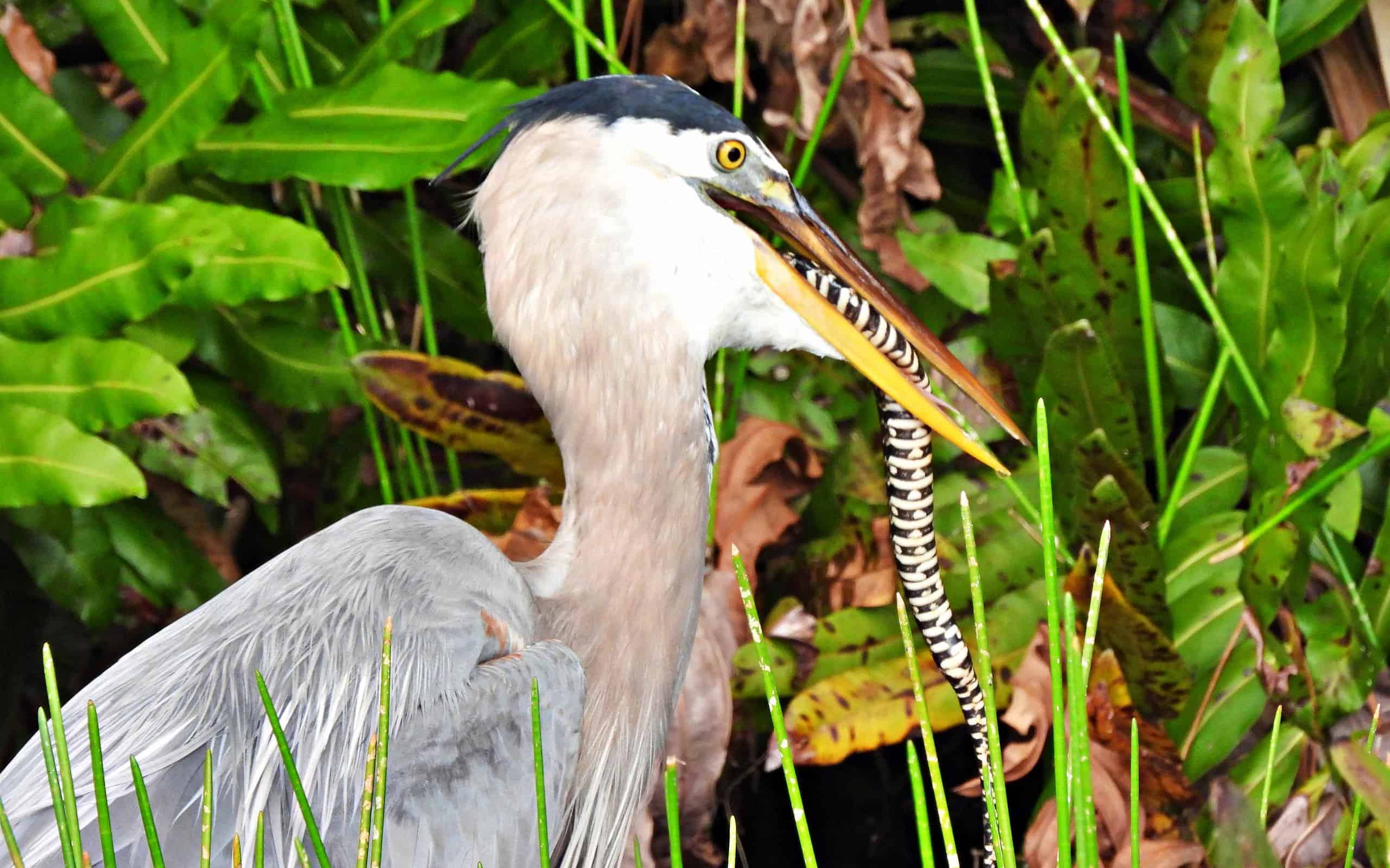The great blue heron is a powerful creature with a unique hunting ability. In the video shown above, you can see it utilizing its strong mandible to attempt to kill and eat a water snake. However, despite the heron’s efforts, the water snake puts up a tough fight by wrapping itself around the heron’s legs.
Where Do Great Blue Herons Live?
Great blue herons live in the Americas (primarily North America) in a variety of habitats. Specifically, the large water bird occupies ecosystems like lakes, ponds, rivers, wetlands, and marshes. They live in both freshwater and saltwater.
In terms of nesting, the great blue heron will typically nest in trees, mangroves, bushes, and even manmade structures. They’ll use sticks, pine needles, moss, dry grass, small twigs, and other material from nearby trees, shrubs, or abandoned nests.
Do Herons Eat Snakes?
Yes, herons will occasionally hunt and eat snakes. Their diets primarily consist of fish, but they will sometimes go for birds, rodents, snakes, and small animals.

Great blue herons will stand on small islands in ponds and other bodies of water to hunt prey.
©flownaksala/iStock via Getty Images
When hunting a water snake, as shown in the video, the great blue heron will stand still and wait for the snake to come closer, so as not to scare it away. Once the snake slithers within reach, the heron will use its strong mandible to strike the snake and attempt to swallow it whole. In fact, many people will compare a heron eating a snake to a person eating spaghetti.
How Do Snakes Avoid Predators?
Snakes avoid predators in a variety of ways, but they primarily use their skin and coloring as camouflage to hide from view. Additionally, depending on the type of snake, many will burrow or even play dead so predators will leave them alone.
If confronted or attacked, snakes will often put up a fight — as demonstrated in the video above. Typically, they will hiss or rattle their tale to scare off their predators. Others will fight back by using their venom or constriction methods to defeat the animal.
Thank you for reading! Have some feedback for us? Contact the AZ Animals editorial team.








